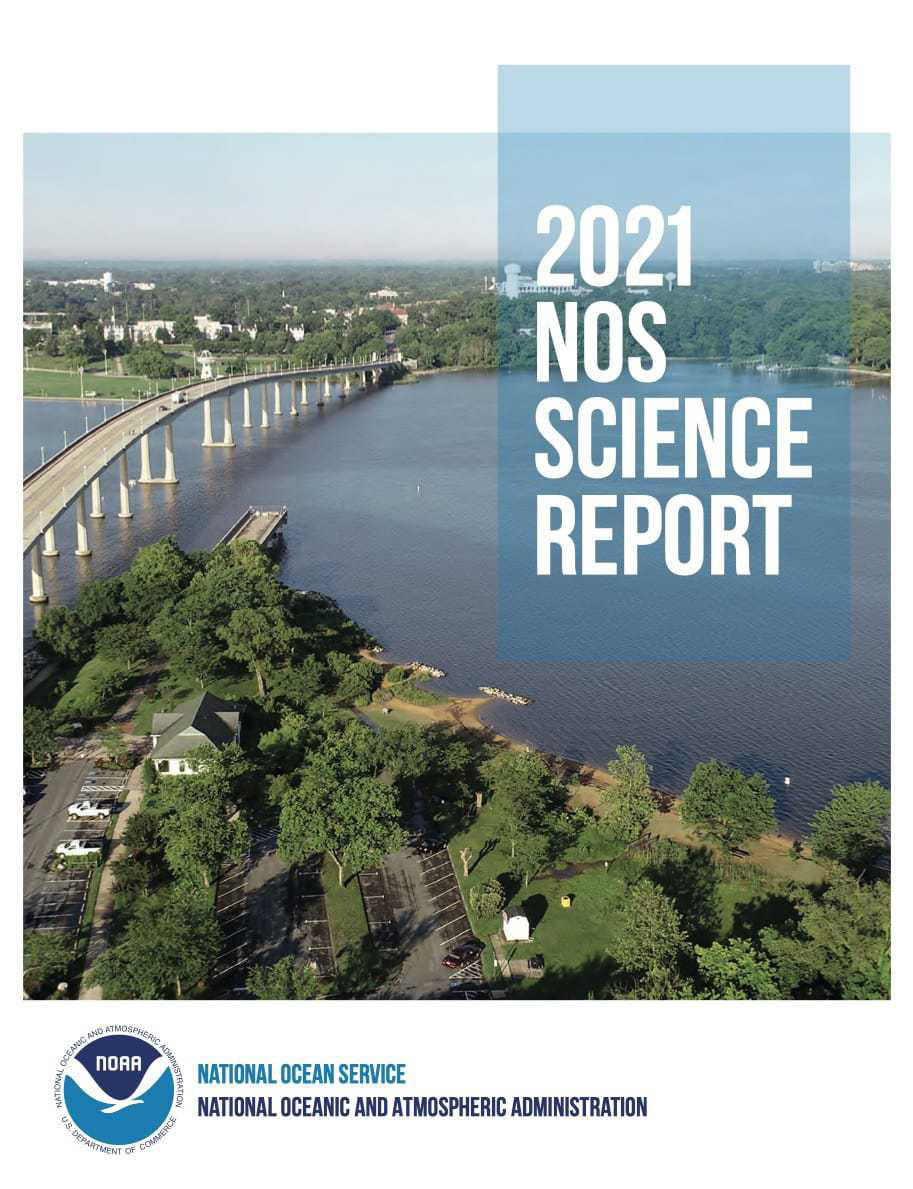2021 National Ocean Service Science Report
Selected scientific projects undertaken by NOS program offices during Fiscal Year 2021.
This report includes summaries of selected scientific projects undertaken by the program offices of NOAA’s National Ocean Service (NOS) during Fiscal Year 2021 (FY21). All of these projects were submitted by each program office for consideration in the annual NOAA Science Report (2021), within which many are also featured. Each project summary includes a short description of the research conducted by NOS staff, major accomplishment(s), and points of contact, with links to published materials and online project information.
This product was assembled by the National Ocean Service Coastal Science Board, which serves as the forward-thinking science advisory group to the National Ocean Service. The Board provides a forum to strengthen internal connections between program offices; NOS Headquarters and Leadership; and NOAA Headquarters, resulting in better service to NOS constituents and greater support of NOAA’s mission. Additionally, the Board provides assistance to all NOS Program Offices in establishing and addressing priorities for coastal, ocean, and Great Lakes science, as well as in identifying current and future science and research requirements in support of NOS Program Offices, associated stakeholders, and statutory mandates. The Board reports to the director of the National Centers for Coastal Ocean Science, who serves as the NOS representative to the NOAA Science Council. The Board also provides annual updates of its progress to NOS program office leadership.
The National Ocean Service is the nation’s premier science agency for oceans and coasts. NOS delivers the applied science, modeling, tools, and services needed to understand, predict, and respond to the challenges we face along America’s 95,000 miles of shoreline and 3.5 million square nautical miles of coastal, Great Lakes, and deep-ocean waters. Additionally, NOS oversees the definition, maintenance, and access to the National Spatial Reference System for all federal geospatial activities. This enables NOS to better manage the sea/shore boundary for coastal resilience and planning.

The NOS Science Report for 2021 is a subset of the larger NOAA Science Report. The document is available to download in whole or in parts below.
This report includes summaries of select scientific projects undertaken by program offices of NOAA’s National Ocean Service during Fiscal Year 2021. Each project summary includes a short description of the research conducted by NOS staff, major accomplishment(s), links to published materials, and online project information.
COASTAL COMMUNITIES represent a major economic engine for the United States. Immediate and potentially life-threatening events such as hurricanes, as well as long-term issues like high tide flooding, are real challenges to coastal communities. NOS brings a unique range of information and capabilities to help communities prepare for, respond to, and recover from these events.
SHIPS MOVE $1.5 TRILLION worth of products in and out of U.S. ports every year. Every ship moving in and out of U.S. ports relies on navigation charts and water level information that NOS alone provides. All mapping, charting, and transportation activities and infrastructure are founded on a reliable, accurate national coordinate system. NOS is solely responsible for maintaining that system, which provides more than $2.4 billion in potential annual benefits to the U.S. economy. Businesses in the maritime community rely on NOS for a range of decisions, from how much cargo to load to choosing the safest and most efficient route between two points. They use NOS data, tools, and services to plan seasonally for ship schedules to service global trade more safely and efficiently as significantly larger vessels transit through U.S. ports.
The value of the U.S. coastal tourism and recreation industry in 2009 was $62 billion. NOS plays a critical role in protecting and promoting access to these special coastal and marine places. NOS is entrusted with the responsibility to manage a network of underwater parks encompassing more than 600,000 square miles of coastal, marine, and Great Lakes waters. Across all national marine sanctuaries, about $8 billion annually is generated in local economies from activities like commercial fishing, tourism, and recreation. NOS also partners with states to manage national estuarine research reserves, a network of 29 coastal sites designated to protect and study estuarine systems. The reserves reflect the rich diversity of environments along our coasts and Great Lakes, and provide places for education, recreation, and boosting local economies.